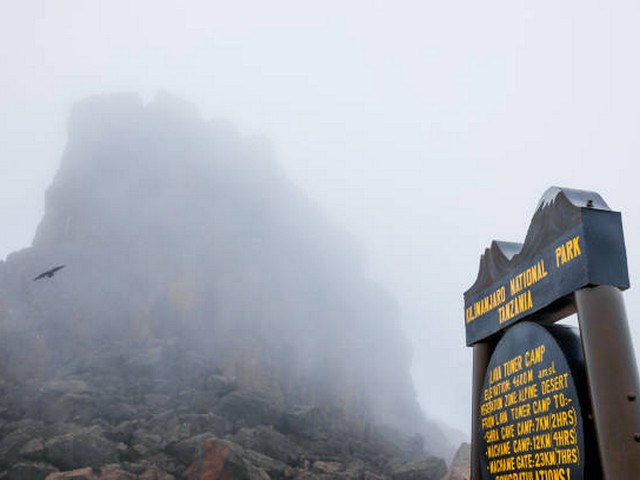Kilimanjaro Photography Tips For Professional Photographers
Welcome to the majestic realms of Mount Kilimanjaro, where the landscapes are as varied as they are breathtaking. For professional photographers, capturing the essence of Kilimanjaro is not just an opportunity; it’s an exhilarating challenge. Whether you’re framing the icy cap of Kibo at sunrise or zooming in on the intricate details of unique alpine flora, every shot you take is a narrative of endurance, beauty, and the raw power of nature.
At Kilimanjaro Centre for Trekking and Ecotourism (KCTE), we understand the allure Kilimanjaro holds and the unique demands it places on photography enthusiasts. In this guide, we offer you expert Kilimanjaro photography tips tailored for professionals who wish to capture the iconic mountain in all its glory. Let your lenses meet the towering beauty and may each image you capture tell a compelling story!
Understanding Kilimanjaro’s Unique Photography Environment
The Altitudinal Variation
Kilimanjaro’s ecosystem changes dramatically from tropical at the base to arctic at the summit. Each zone offers distinct subjects and challenges. Lower slopes are lush and green, ideal for vibrant, colorful photography. As you ascend, vegetation thins, and the landscape opens up, offering vast, unobstructed panoramas.
Lighting Conditions
The equatorial location of Kilimanjaro means the sun is intense and can create harsh shadows. Early morning or late afternoon, known as the golden hours, are optimal for softer light and dramatic shadow play.
Weather Unpredictability
Weather on Kilimanjaro can change swiftly. The ability to quickly adapt your shooting parameters to capture cloud movements over the peak or sudden rainstorms will set your work apart.
Gear Recommendations for Kilimanjaro
Cameras and Lenses
- Camera Bodies: A weather-sealed body is ideal. Conditions can be dusty or wet.
- Lenses: A versatile zoom lens (e.g., 24-70mm, 70-200mm) for landscapes and distant shots; a macro lens for flora and fauna; and a fast wide-angle lens for astrophotography and expansive landscapes.
Accessories
- Tripods: A lightweight, sturdy tripod for long exposure shots and stability.
- Filters: Polarizers to reduce glare and enhance skies; ND filters for waterfalls and clouds.
- Extra Batteries and Memory Cards: Cold can drain batteries quickly, and high-capacity memory cards are a must for high-resolution images.
Best Photographic Spots on Kilimanjaro
The Rainforest Zone
Capture the vibrant life at Kilimanjaro’s base where the dense, misty rainforest teems with exotic wildlife and lush scenery.
Shira Plateau
Offers expansive views of Kilimanjaro’s ridges and is perfect for capturing the grand scale of the landscape.
Barranco Wall
A dramatic backdrop with its steep face. Ideal for adventurous shots with climbers in action.
Uhuru Peak
The ultimate sunrise shot with the curvature of the earth visible at the horizon, and glaciers shining in the first light of the day.
Creative Tips for Capturing Kilimanjaro
Play with Perspectives
Use the varied terrain to experiment with angles and perspectives. A shot from the ground of a towering tree can emphasize height; alternatively, a shot from above can illustrate scale and scope.
Incorporate Local Elements
Include local Chagga tribe members or fellow climbers in your shots to add a human element to the vast natural landscape.
Time-Lapse Techniques
Consider a time-lapse to show the movement of clouds around the summit or the shifting colors of the sky.
Night Sky Photography
Kilimanjaro’s minimal light pollution makes it an excellent spot for capturing the Milky Way or star trails.
Post-Processing Tips
Post-processing is crucial. Enhance raw images to reflect the true beauty of Kilimanjaro. Adjusting exposure, bringing out details in shadows, and managing highlights can make your photos stand out.
Why Climb with Kilimanjaro Centre for Trekking and Ecotourism (KCTE)?
Choosing KCTE means opting for an experienced guide who understands both the challenges of the climb and the needs of a professional photographer. We provide logistic support that includes carrying extra gear and giving you ample time to capture the perfect scenes without rush.
FAQ: Kilimanjaro Photography
Q: What is the best time of year for photography on Kilimanjaro?
A: The best times are during the dry seasons, from June to October and from December to March.
Q: How do I handle my equipment in Kilimanjaro’s varying climates?
A: Use silica gel packets to absorb moisture and keep your gear in weather-sealed bags. Always have protective lens covers and caps on when not shooting.
Q: Are there any restrictions on photography in Kilimanjaro National Park?
A: Yes, drone photography requires special permissions. Always check the latest regulations before your trip.
Q: Can KCTE help with specific photographic needs?
A: Absolutely! We pride ourselves on customizing experiences. If you need to spend extra time in a location or require support for specific photographic projects, we’re here to assist.
Capture Kilimanjaro With Us!
In conclusion, Kilimanjaro is not just a mountain; it’s a photographer’s paradise. With the right approach, equipment, and support from Kilimanjaro Centre for Trekking and Ecotourism, your photographic expedition can be as monumental as the mountain itself. Are you ready to capture the roof of Africa in all its glory? Book your climbing experience with KCTE today and bring home more than just photos – bring home stories worth telling.




